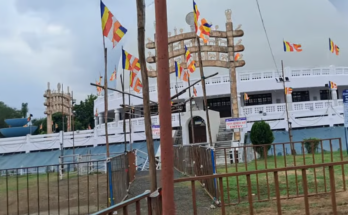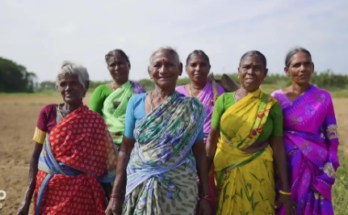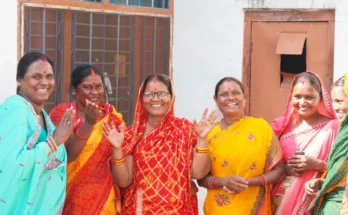The collapse of the Hasina regime in August 2024 marked a significant shift in Bangladesh’s political landscape. Despite fears of widespread violence, the country demonstrated remarkable resilience during the 72-hour power vacuum before the interim government took control. Minorities were not specifically targeted on the basis of religious identity, though some faced retaliation due to their political affiliations.
The historical and political challenges faced by minority communities in Bangladesh present a multifaceted subject for analysis. Since Bangladesh’s independence in 1971, the country’s democratic system has been marked by illiberal practices, including the manipulation of minority issues for political leverage. The legacy of partition, which divided British India along religious lines, continues to influence the socio-political landscape. Religious identity remains a potent tool for political mobilisation, often at the expense of minority communities.
Under former prime minister Sheikh Hasina’s leadership, the Awami League (AL) frequently exploited pro-Hindu sentiments to garner support from India while failing to address the systemic issues faced by minorities in Bangladesh. Over 3600 attacks on minorities were reported between 2013 and 2021 during Hasina’s tenure, yet none resulted in completed judicial trials, raising questions about the sincerity of her commitment to minority protection.
The fall of the Hasina government following the violent student-led revolution in August 2024 has created a new set of challenges for India–Bangladesh relations and Bangladesh’s Hindu minority. While India heavily invested in Hasina’s leadership, tensions have grown after the revolution, as reflected in Indian External Affairs Minister S. Jaishankar’s statement that officials from Bangladesh’s new interim government ‘blame India for all their issues’. The student-led revolution also saw accusations that Hindu mass protests were orchestrated by the AL.
The apparent rise of Hindutva ideology among a fringe segment of Bangladesh’s Hindu population exacerbates the situation. Organisations like the Bangladesh Hindu Jagran Manch, inspired by India’s Rashtriya Swayamsevak Sangh, a far-right paramilitary organisation, have emerged to promote Hindu cultural nationalism and organise events like Ram Navami that were previously uncommon in Bangladesh. This shift has led to internal divisions within Hindu organisations and raised concerns about escalating tensions between Hindu and Muslim communities.
The arrest of Chinmoy Roy, a Hindu monk charged with sedition in November 2024, became a focal point. His detention and subsequent denial of bail have been highlighted by Indian media as evidence of minority persecution. This case has fuelled tensions between India and Bangladesh, with Indian media using it to push a narrative of minority persecution, further complicating the interim government’s efforts to stabilise the country.
Misinformation and disinformation about the plight of minorities in Indian media has muddied the issue. Investigative reports have found little evidence to support claims of systematic anti-Hindu atrocities. Many incidents, including the deaths of nine Hindu men, were linked to political retribution, mob violence and criminal activities rather than religious persecution. While politically motivated killings are not justifiable, they highlight the gravity of the July Revolution and its impact on the AL’s political machinery.
The anti-minority rhetoric in Indian media seems to serve two primary purposes — providing a moral boost for Hindutva ideology by reinforcing the narrative of Hindu victimisation and putting pressure on Bangladesh’s interim government. This strategy could also pave the way for India to re-establish leverage over its neighbour and reincorporate the AL into Bangladesh’s political landscape.
Despite challenges, Bangladeshi society has shown resilience in protecting its minorities. The collective efforts of various political and social groups have played a proactive role in safeguarding minority communities in the wake of the revolution, while also underscoring the potential for maintaining communal harmony. These groups include the Bangladesh Nationalist Party, Jamaat-e-Islami, madrassa students and university students.
But the growing influence of Hindutva ideology within the Hindu community presents new challenges, threatening to deepen communal divisions and alter interfaith relations in the country.
For Bangladesh to maintain unity within diversity, Muslims must take the lead in protecting minority communities and ensuring communal harmony. Hindus should also distance themselves from anti-nationalist forces that could further divide society. The Bangladeshi government must uphold minority rights and ensure justice for victims of communal violence, while political parties should refrain from exploiting minority issues for electoral gains.
Finally, the Indian government should respect Bangladesh’s sovereignty and allow it to navigate its political landscape without interference. A relationship based on mutual respect rather than coercion will be essential for fostering long-term regional stability and harmony. Breaking away from politically driven narratives and focusing on factual assessments will be critical in ensuring a balanced perspective on minorities in Bangladesh moving forward.
The minority issue in Bangladesh is deeply intertwined with the country’s political history, legacy of partition and recent political upheaval. Addressing these challenges will require a concerted effort from all stakeholders to ensure a future of communal harmony and mutual respect.
Shafi Md Mostofa is Associate Professor at the University of Dhaka, Bangladesh, Post-Doctoral Fellow at the Democracy Institute of Central European University, Hungary and Adjunct Lecturer at the University of New England, Australia.



